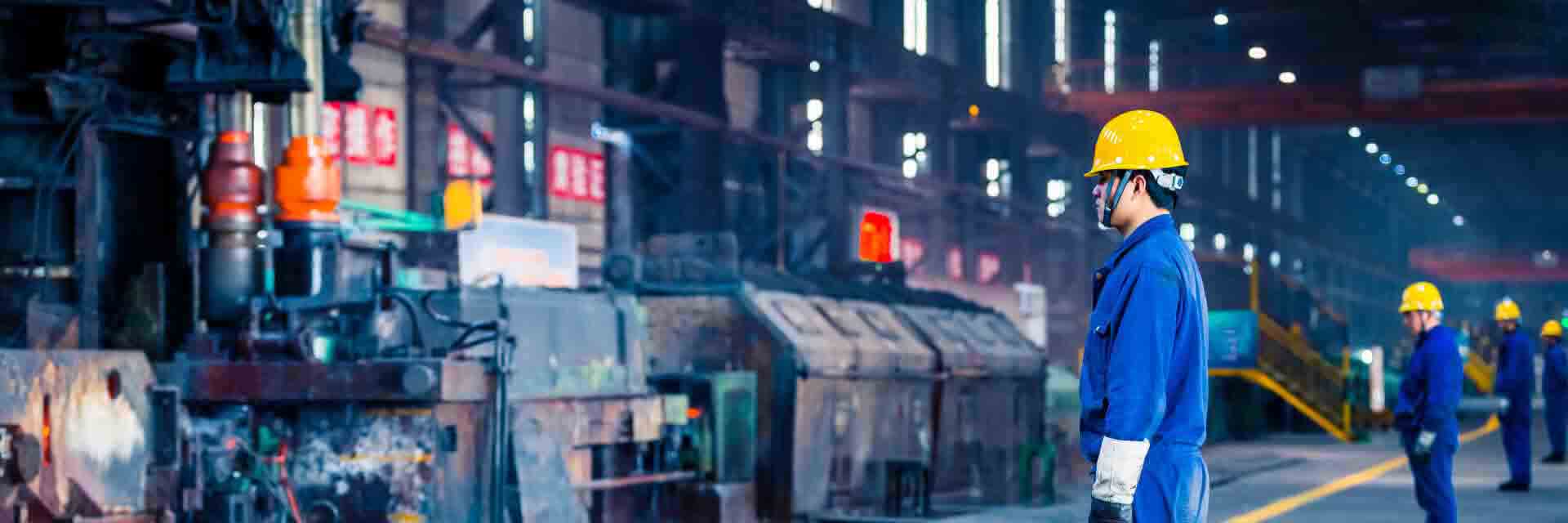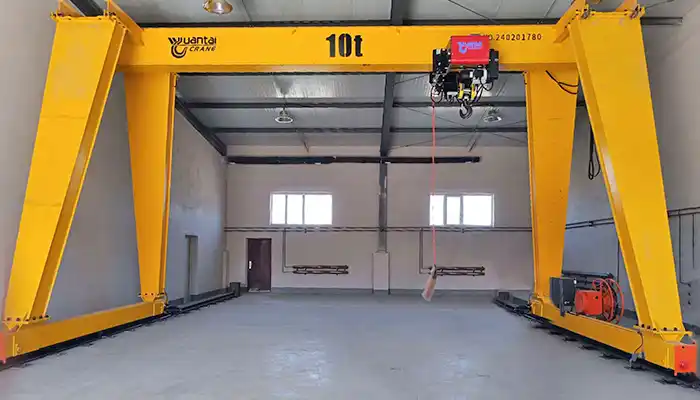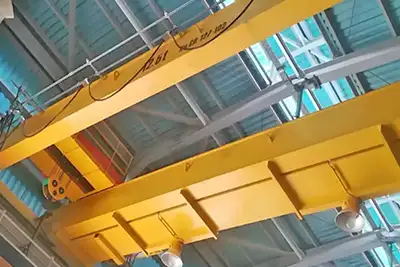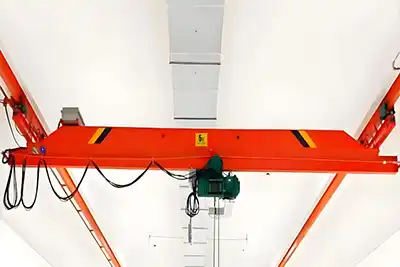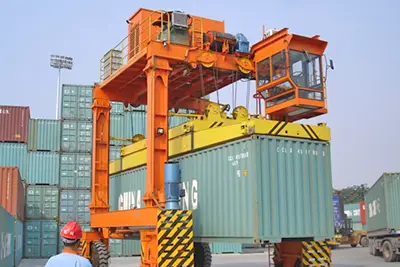Crane Kits: Affordable Overhead Crane, Good Price Crane Kit
Crane kits offer cost-effective, flexible, and scalable lifting solutions, supporting local fabrication and long-term growth in developing countries.
Introduction: A Smarter Way to Lift in Developing Economies
Factories and workshops are growing fast in many developing countries. Places like Africa, Asia, and Latin America are seeing more local production, warehousing, and small-scale industries popping up. And with that comes a growing need for reliable lifting equipment.
But here’s the challenge—buying a full overhead crane system is expensive. It also costs a lot to ship, install, and maintain. Not every factory can afford that.
That’s where crane kits without steel structures come in.
These kits include all the core components—hoist, end trucks, control panel, cables, and other essential parts—but you build the steel structure locally. It’s a flexible and smart solution for businesses that have welding capacity or can work with a local fabricator.
Why Crane Kits Make Sense
- They cut down shipping costs—no need to transport long steel beams.
- You avoid high customs duties on heavy, bulky items.
- You get the flexibility to build what fits your space and budget.
Different Crane Kit Options for Your Needs
Depending on your working environment, you can choose:
- Overhead bridge crane kit – Ideal for indoor workshops with ceiling support.
- Gantry crane kit – Great for outdoor use or when columns aren't available.
- Jib crane kit – Perfect for small workstations or single lifting points.
These are all part of what we call crane kits for developing countries—customized, cost-effective, and ready for local assembly.
So if you're looking for affordable lifting solutions that support your business growth, crane kits for Africa, Asia, and Latin America are worth considering.
What Is a Crane Kit Without Steel Structure?
A crane kit without steel structure includes all the essential lifting components—except for the large steel beams or support columns.
This kind of kit is a smart and flexible option. It’s especially useful for factories and workshops in developing countries that can fabricate the steel parts locally.
What’s Included in a Crane Kit?
Most crane kits come with the following:
- Hoist – the part that does the actual lifting, usually electric.
- End trucks – these let the crane move along rails or tracks.
- Electrical systems – motors, wiring, and power controls.
- Control system – includes pendant controls or radio remotes.
- Safety devices – limit switches, emergency stops, and other safety features.
These components are designed to work together. You can install them easily on a structure built in your own facility or by a local steel workshop.
What’s not included?
- No main girders
- No runway beams
- No supporting columns or legs
These large structural parts can be fabricated locally using standard materials, saving cost and shipping time.
Types of Crane Kits You Can Choose
There are different types of crane kits depending on your application:
Overhead bridge crane kit
This type runs on rails installed on top of runway beams or building columns. It’s a great fit for indoor factories with strong building structures already in place.
Gantry crane kit
This one doesn’t rely on the building for support. Instead, it moves on the ground and is supported by steel legs you can fabricate locally. It works both indoors and outdoors.
Jib crane kit
This is a compact solution for individual work areas. It can be mounted on a floor or a wall and is great for loading small machines or tools in a specific bay.
Each crane kit includes the core lifting system, while giving you the flexibility to design and build the steel structure that fits your space.
Why Local Fabrication Is a Big Advantage
Using local resources to build the steel structure offers several key benefits:
- It lowers your overall cost. You avoid high transport fees and import taxes on long steel parts.
- It speeds up your project. You don’t have to wait for heavy components to be shipped from overseas.
- It allows custom sizing. You can adjust the span, height, or layout based on your actual space.
- It supports your local economy. Local welders and workshops can take on the fabrication work.
This makes crane kits without steel structures a perfect fit for factories in developing countries. You get the core technology from a trusted supplier while keeping the rest simple, local, and cost-effective.
Why Crane Kits Work Well in Developing Countries
Crane kits are becoming more popular in places like Africa, Asia, and Latin America. Why? Because they’re simple, flexible, and cost-effective—exactly what many small to medium factories need.
Instead of buying a full crane system, these kits let you use local resources to build your own structure. It’s a smart way to lift without spending too much.
Lower Upfront Costs
Buying a crane with everything included—especially the long steel beams—can get expensive fast. Shipping, taxes, and heavy lifting equipment all add up.
With a crane kit, you skip the heavy parts and just buy the key components.
- You only pay for the hoist, motor, control box, and other essential items.
- No need to import bulky steel beams or supports.
- Lower shipping and customs fees.
That’s what makes crane kits an affordable lifting solution for many growing businesses.
Use What You Already Have
Many factories in developing economies have access to basic steel materials and skilled welders. Why not use them?
Crane kits are designed for this kind of setup.
- You can buy steel locally at a lower cost.
- Local welders or contractors can build the structure to fit your space.
- You save time and help create local jobs at the same time.
This is why crane kits for developing economies are a smart long-term investment. They cut costs and support your local economy.
Fits Any Facility Layout
No two workshops are the same. Some are big and open. Others are small and packed. That’s where the flexibility of crane kits comes in.
You can adjust the design to match your real working space.
- Change the span or height based on your building.
- Use single or double girder setups depending on the load.
- Choose between bridge crane kits, gantry crane kits, or jib crane kits.
You’re not stuck with a one-size-fits-all system. You build what fits—and that makes a big difference.
Economic and Operational Benefits
Crane kits bring more than just cost savings upfront. They also offer ongoing economic and operational benefits that make them a smart choice for factories in developing countries. Let’s break down how.
Minimized Shipping Costs
Shipping costs can be one of the biggest expenses when buying lifting equipment. Crane kits help reduce this by being compact and easy to transport.
- Smaller, lighter packaging means you pay less for shipping.
- The crane parts come in manageable, box-sized packages rather than bulky, heavy steel beams.
- Fewer shipping challenges, especially for remote or hard-to-reach locations.
This is a huge advantage for factories that don’t have easy access to major ports or international transport hubs.
Reduced Customs Duties and Import Taxes
Another benefit is lower customs duties and taxes. Full crane systems, especially large steel structures, come with high import taxes.
- Since crane kits don’t include bulky steel parts, you pay fewer taxes.
- Import duties are often calculated based on size and weight, so a smaller package means lower costs.
This adds up to significant savings for factory owners when importing crane kits compared to a complete crane system.
Shorter Lead Time for Delivery and Commissioning
Time is money. And waiting months for a crane system to arrive can delay projects.
- Crane kits are faster to ship and arrive in less time.
- You don’t have to wait for a complete crane system to be assembled overseas and then delivered.
- The assembly is simpler and quicker when the steel structure is made locally.
This means you get your crane up and running sooner—helping your business stay on track with minimal downtime.
Easier Maintenance with Familiar Components
When you use a crane kit, maintenance becomes easier too. Local technicians are often more familiar with the standard components in the kit.
- Most crane kits use widely available parts that are easy to find and replace.
- You won’t have to rely on expensive or rare parts.
- Faster repairs when something goes wrong.
With familiar components and local expertise, your crane will run smoothly for years.
These economic and operational benefits make crane kits a smart choice for businesses in developing countries looking to save money and increase efficiency.
Versatility Across Key Industries
Crane kits offer incredible versatility, making them ideal for a wide range of industries. Whether you’re in manufacturing, agriculture, or construction, there’s a crane kit that suits your needs. Let’s take a closer look at how these kits fit into different industries and applications.
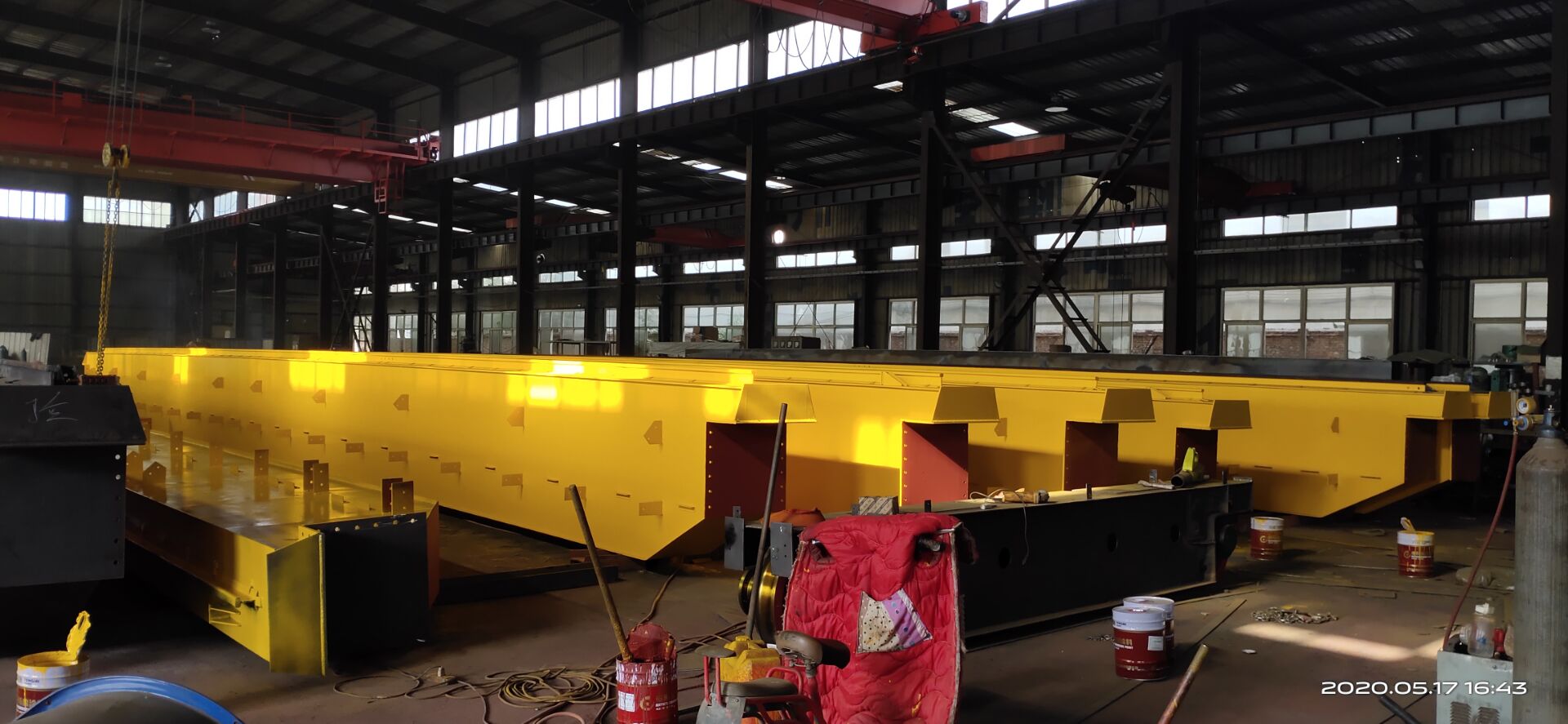 25/5 Ton Overhead Crane for Steel Mill, Complete Crane Kit Showcase
25/5 Ton Overhead Crane for Steel Mill, Complete Crane Kit Showcase
Overhead Bridge Crane Kits
These are the go-to choice for indoor use, especially in production workshops and mechanical assembly lines.
- Production Workshops – Overhead bridge cranes help move heavy items across the production floor quickly and safely.
- Mechanical Assembly Lines – Perfect for assembling parts and products, these cranes move materials efficiently from one station to the next.
Overhead bridge crane kits are designed to integrate with existing building structures, making them ideal for factories in Africa, Asia, and Latin America that have the space and support to hang cranes from the ceiling.
More case study on overhead bridge crane kit project :
- 3 Ton Overhead Crane kit for Malaysia, Economical Overhead Crane Solution
- Single & Double Girder Crane Kit for Sale Myanmar 3 Ton & 10 Ton
- Case Study: 5 Ton Overhead Crane Kit with No Girder for Sale in Macedonia
- 10 Ton Overhead Crane Kit, No Girder Economical Solution for Sale the Philippines
- 15-Ton Explosion-Proof Overhead Crane Kit – Cost-Effective Solution
For outdoor use or areas without a supporting roof, gantry cranes are a great option.
- Construction Sites – Gantry cranes are used to move materials and equipment around large sites.
- Warehouses and Outdoor Yards – They’re perfect for loading and unloading heavy goods in open spaces.
- Heavy Lifting – Gantry cranes are designed to carry heavy loads without relying on a building structure.
These gantry crane kits are built for versatility and can be customized to suit the needs of any outdoor or large-scale facility.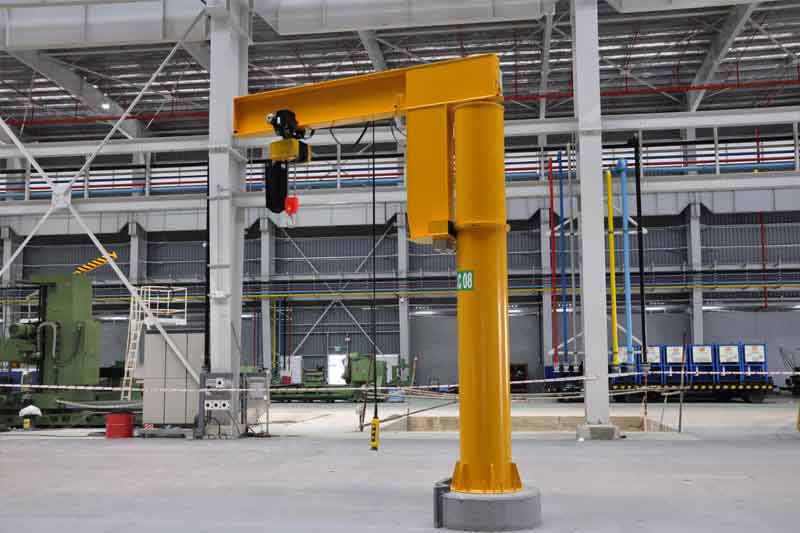
Jib crane kit for sale
Jib Crane Kits
Jib cranes are compact and easy to install, making them perfect for smaller tasks and confined spaces.
- Workstations – Great for lifting tools, machinery parts, and products within a specific work area.
- Repair Areas – Used to lift heavy components or parts during repairs or maintenance.
Jib cranes are often used where space is limited but lifting tasks are still needed. They provide a lot of power in a small footprint, making them ideal for smaller operations in developing countries.
Industry Applications for Crane Kits
Crane kits are essential in a wide range of industries, helping businesses grow, increase efficiency, and reduce labor costs.
- Manufacturing – Crane kits support production lines, assembly stations, and heavy machinery handling.
- Agriculture – Used for handling crops, packaging materials, or farm equipment in warehouses or processing plants.
- Construction – Essential for moving materials, equipment, and machinery on-site, especially in large outdoor spaces.
- Logistics & Warehousing – Crane kits help load and unload goods in warehouses and distribution centers, improving speed and safety.
No matter the industry, crane kits provide affordable lifting solutions for a variety of tasks, helping businesses in Africa, Asia, and Latin America thrive.
Supporting Local Growth and Job Creation
One of the most significant benefits of crane kits is how they support local businesses and contribute to job creation in developing economies. These kits offer more than just affordable lifting solutions—they help communities grow and create opportunities for long-term development.
Encourages Local Welding and Fabrication Businesses
When companies use crane kits, they often need local steel suppliers and welding businesses to fabricate the crane structure.
- Local steel fabricators can make the beams, supports, and other components needed for the crane.
- Welders and machinists are hired to cut, weld, and assemble the steel parts.
- This helps support small, local businesses and creates new jobs.
It’s a win-win situation: businesses save on expensive imports, and local workshops get more work and grow.
Provides Opportunities for Training Technicians
Installing and maintaining cranes isn’t something everyone can do. Crane kits provide opportunities for training local technicians to handle installation, repairs, and ongoing maintenance.
- Training programs can be set up for technicians to learn how to install cranes safely and correctly.
- Local workers can also be trained to troubleshoot and maintain cranes, ensuring long-term support.
- This increases the skilled labor force and gives people valuable, in-demand skills.
Technicians can become experts in crane kit installation and service, creating jobs that benefit the whole community.
Scalable Solutions for Growing Businesses
Another big benefit of crane kits is that they’re scalable—meaning they can grow with your business.
- Start small with a basic crane kit that suits your current needs.
- As your business expands, you can upgrade or add components to your crane system.
- It’s easy to add extra lifting capacity or expand the reach of your crane without having to replace the entire system.
This scalability means businesses can invest in a low-cost, high-quality solution now and adapt it as they grow, all while continuing to support local industries.
By choosing crane kits, businesses help create jobs, build a skilled workforce, and stimulate local economies. It’s a sustainable way to grow—not just a solution for lifting, but also a way to invest in long-term community development.
Comparing Crane Kits with Full Crane Systems
When deciding whether to go for a crane kit or a full crane system, it’s crucial to weigh the differences in cost, customization options, logistics, and the fit for regions with developing infrastructure. Let's dive into each option and see which one works best for different situations.
Crane Kits: Modular, Flexible, and Easy to Transport
Crane kits are designed with simplicity and flexibility in mind. They come with all the key parts for the crane—hoist, motors, end trucks, electrical systems, and controls—but exclude the heavy steel structure. Here’s why this approach works so well for many businesses, especially in developing regions:
- Modular design – Each crane kit is a set of modular components that can be adjusted based on your needs. You can choose from overhead bridge crane kits, gantry crane kits, or jib crane kits, depending on your specific lifting tasks and workspace.
- Local fabrication – Since crane kits don’t include the steel structure, factories in developing countries can use locally sourced steel to fabricate the crane’s frame. This means no costly imports for heavy steel parts.
- Easy to transport – The compact, manageable packaging of crane kits makes shipping much easier and cheaper. You don’t have to worry about moving massive steel beams across long distances. This is particularly helpful in regions with less-developed infrastructure, where transporting large equipment can be a logistical challenge.
- Flexibility in installation – Crane kits are easier and faster to assemble. You don’t need advanced installation equipment or highly trained technicians. Local workers can quickly set up and install the kit, often with basic tools and equipment.
For factories in areas with developing infrastructure, crane kits provide a great solution because they’re affordable, customizable, and can be adapted to the local environment.
Full Crane Systems: Higher Cost, Complex Logistics, Limited Customization
While full crane systems might seem like an attractive option for larger, more established businesses, they come with a set of challenges that may not be suitable for regions with developing infrastructure. Here's why:
- Higher cost – Full crane systems are much more expensive because they include the entire crane package: the steel structure, hoist, motors, electrical systems, and other components. The cost of importing and assembling a full system can be a heavy financial burden, especially for small to medium-sized businesses in developing countries.
- Complex logistics – Shipping a full crane system involves handling large, heavy steel components. These cranes are bulky and often need specialized transport, leading to higher shipping costs and longer delivery times. This can be a major issue for regions with underdeveloped infrastructure, where long waits for delivery and additional customs clearance can delay projects.
- Limited customization – Unlike crane kits, full crane systems typically come in fixed designs that aren’t easily adjustable to fit your specific needs. If your factory has a low ceiling, tight space, or unusual load requirements, you may be limited to the standard configuration, which might not be ideal. Customizing these systems often requires additional costs or may not be possible at all.
With full crane systems, you’re paying for more than you need, and you may face significant delays and extra costs due to shipping and installation complexities.
Crane Kits: A Better Match for Developing Regions
Given the lower cost, easier transport, local customization, and quicker installation, crane kits are often a better fit for factories and businesses in developing regions.
- Cost-effective – By purchasing just the technical components and handling the steel fabrication locally, crane kits save money on shipping, customs, and labor. This makes them an affordable option for regions with limited capital and tighter budgets.
- Flexibility and scalability – Crane kits can be customized to fit any facility layout, whether it’s a small workshop or a large production floor. As your business grows, you can easily expand or upgrade your crane system by adding more components without the need to replace the entire setup.
- Reduced shipping costs – Because crane kits come in smaller, manageable packages, shipping costs are significantly reduced. This makes them particularly useful in areas where the cost of importing heavy, large crane systems would be prohibitive.
- Better suited for developing infrastructure – Many areas with less-developed infrastructure don’t have the facilities to handle the import and installation of large, heavy crane systems. Crane kits, being compact and modular, fit better into these environments and are easier to manage.
For businesses in developing regions—whether in Africa, Asia, or Latin America—crane kits provide a practical and scalable solution. They fit local needs, minimize costs, and allow for quick and easy assembly without relying on complicated logistics or expensive imports.
While full crane systems might work well in highly developed areas with established infrastructure, crane kits are often the more practical, cost-effective choice for businesses in developing regions. They provide the same lifting power but with greater flexibility, lower costs, and simpler logistics.
Here's the section on "Things to Consider Before Purchasing", written with clarity and a natural tone:
Things to Consider Before Purchasing
Before you decide to purchase a crane kit, there are several important factors to consider to ensure you get the best solution for your business. Understanding the local environment and capabilities is key to making the right choice.
Local Capabilities for Girder and Support Fabrication
One of the biggest advantages of crane kits is that you can fabricate the steel structure locally. However, this relies on having access to reliable local resources. Here’s what you need to think about:
- Local fabrication capabilities – Ensure that you have access to steel fabricators and welders who can produce the required girder and support structures for your crane. This is a cost-effective option, but it requires local businesses with the right skills and equipment.
- Materials availability – Confirm that there’s easy access to the steel materials required for fabrication. In some regions, certain types of steel may be difficult to source.
- Quality control – Local fabrication should meet safety standards. Make sure you have quality checks in place to ensure the crane structure is built to last and can safely support the crane kit.
Ensuring these local capabilities are available will help you avoid delays and unanticipated costs.
Electrical and Control Compatibility with Local Power Systems
Crane kits come with electrical systems and controls, but it’s crucial to ensure that these systems are compatible with your local power infrastructure.
- Voltage and frequency – Double-check that the crane's electrical components match the local voltage and frequency standards. In some areas, the power grid may differ from international standards, and this can affect the crane’s performance.
- Control systems – Consider whether the crane’s control systems are compatible with local systems or if any modifications are required.
- Power reliability – Make sure the local power supply is reliable enough to support the crane. If power outages are common, you may need to invest in backup systems like generators.
Ensuring compatibility between the crane kit’s electrical systems and your local power grid will prevent operational issues and ensure smooth operation.
Support Services: Remote Guidance, Installation Manuals, or Optional Training
Crane kits require proper setup and maintenance, so it’s essential to ensure that support is available when you need it.
- Installation manuals – Most crane kits come with comprehensive installation guides. These should be clear and detailed to help your local technicians set up the crane with minimal issues.
- Remote guidance – Some crane kit suppliers offer remote support through phone calls or video calls to guide you during installation. This can be especially useful if you run into problems during setup.
- Optional training – Consider whether the supplier offers training for local technicians. This can help build a skilled workforce capable of handling installations and future maintenance on their own.
Access to support services ensures that you won’t be left on your own if complications arise during installation or maintenance.
Partnering with a Reliable Crane Kit Supplier
Choosing a reliable supplier is one of the most critical steps before purchasing a crane kit.
- Reputation and experience – Look for suppliers with a proven track record in providing crane kits to developing regions. Reliable suppliers will have experience with local needs and infrastructure challenges.
- After-sales support – Check if the supplier offers ongoing support after the crane kit is delivered and installed. This might include spare parts, troubleshooting assistance, or regular maintenance.
- Warranty and certification – Ensure that the crane kit comes with a warranty and necessary certifications, like CE or ISO, which ensure quality and compliance with safety standards.
Partnering with a trusted supplier who offers solid after-sales support will help ensure that you get the most value out of your crane kit over the long term.
By considering these key factors before purchasing a crane kit, you’ll be better prepared to make a well-informed decision that aligns with your facility’s needs and local capabilities. Taking the time to evaluate local fabrication resources, electrical compatibility, support services, and the reliability of your supplier will help you avoid costly mistakes and ensure smooth operation for years to come.
Conclusion
Crane kits without steel structures present an excellent solution for businesses in developing countries looking for practical, affordable, and scalable lifting solutions. By opting for crane kits, you gain the flexibility to customize your crane system to your specific needs, without the heavy financial burden of importing complete systems.
Investment in Long-Term Growth
Whether you choose an overhead bridge crane kit, a gantry crane kit, or a jib crane kit, you’re making a smart investment in your factory’s future. These crane kits are designed to grow with your business. You can start small and expand as needed, adapting the crane system to your evolving needs without replacing the entire system.
With a crane kit, you’re not just solving today’s lifting challenges—you’re setting the foundation for long-term growth and sustainability. As your factory grows, your crane system can expand alongside it, offering you both flexibility and cost-efficiency.
Empower Your Factory and Support Local Industry
Choosing crane kits isn’t just about improving your lifting capacity—it’s also about supporting the local economy. With the ability to fabricate steel structures locally, you’re helping create jobs and boost local businesses. Additionally, by working with reliable suppliers and investing in skilled labor, you're fostering a stronger, more capable workforce.
Empower your factory, grow your business, and support local industry by choosing crane kits. With affordable, flexible, and scalable solutions, crane kits provide exactly what you need to succeed in today’s competitive environment.
Make the smart choice today—opt for crane kits to future-proof your factory and contribute to local economic development. Contact to to get free consultation on crane kit design!

